CS 194-26 Project 2: Building a Pinhole Camera
Name: Andrew Oeung, Alex Fang, Nick Titterton
Instructional Accounts: cs194-26-adz, cs194-26-aed, cs194-26-ago
Objective:
This project uses a cardboard box in order to build a makeshift pinhole camera for recreational use. First, we obtained a cardboard box from Amazon, bought the necessary supplies (duct tape, black paper, white paper, etc), covered the insides with black paper and one surface of white paper, then sealed the outer portion of the box with black duct tape. We left a 7 mm aperture hole for the camera (Nikon DX AF-S NIKKOR 35 mm) and a rectangular hole for our cardboard pinholes. We used an exposure setting of 30 seconds and an ISO setting of 1600 or 3200 depending on the lighting. Optimal pinhole equation: 1.9 * sqrt(f * lambda)
Model:
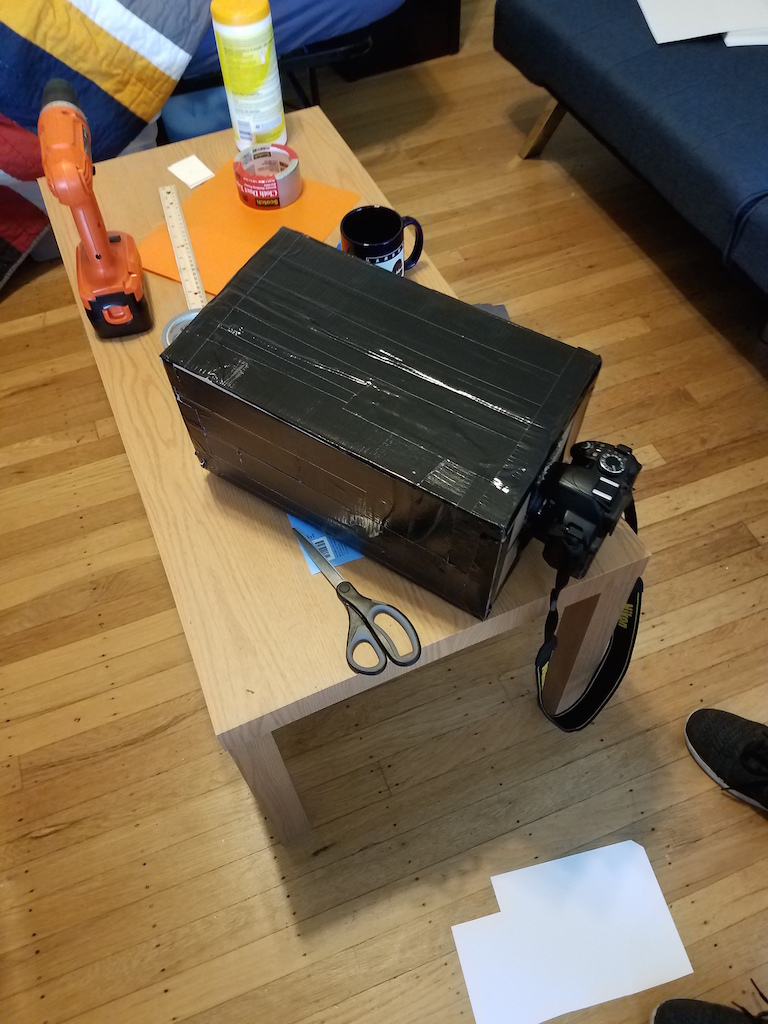
|

|

|
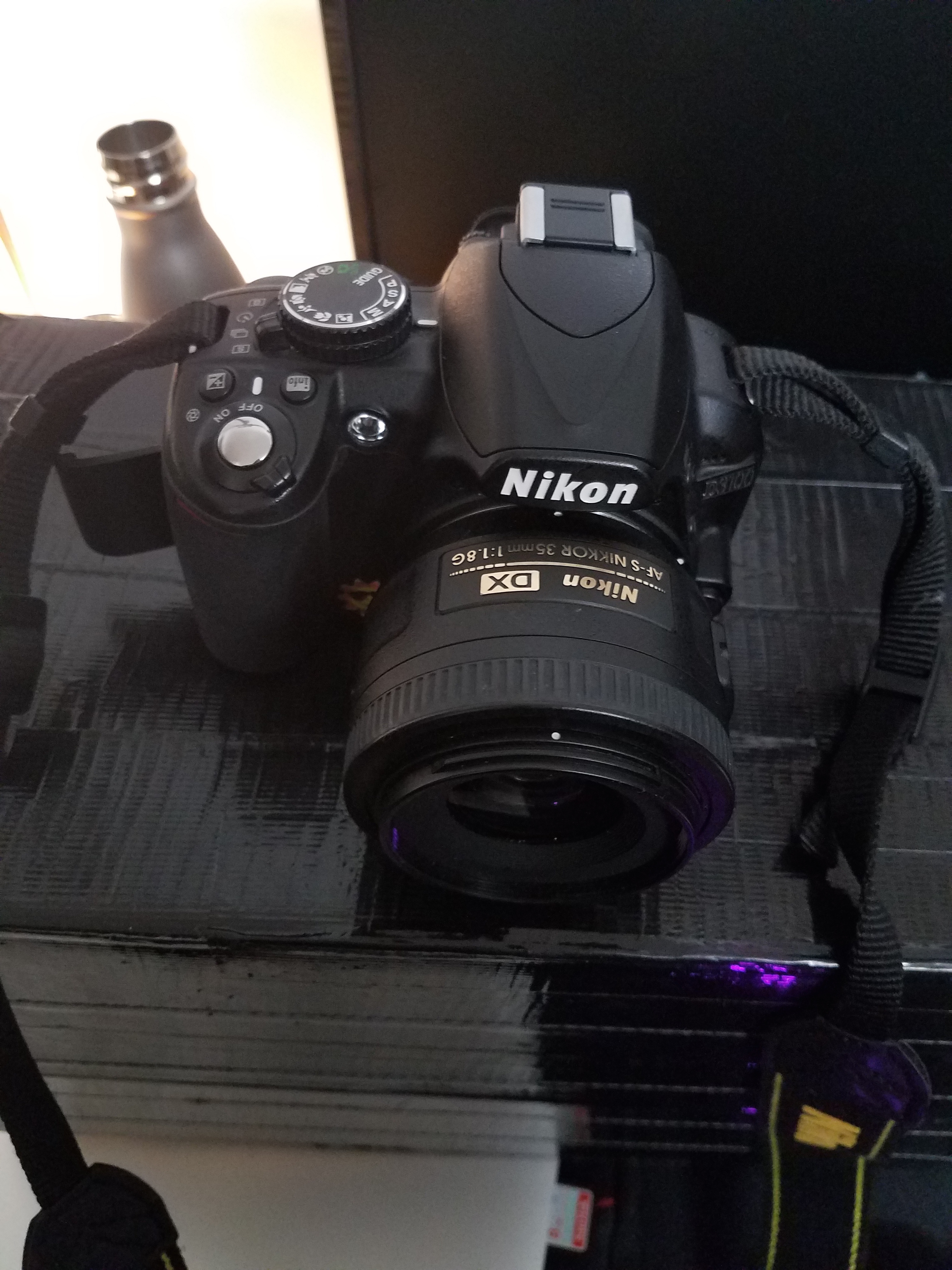
|
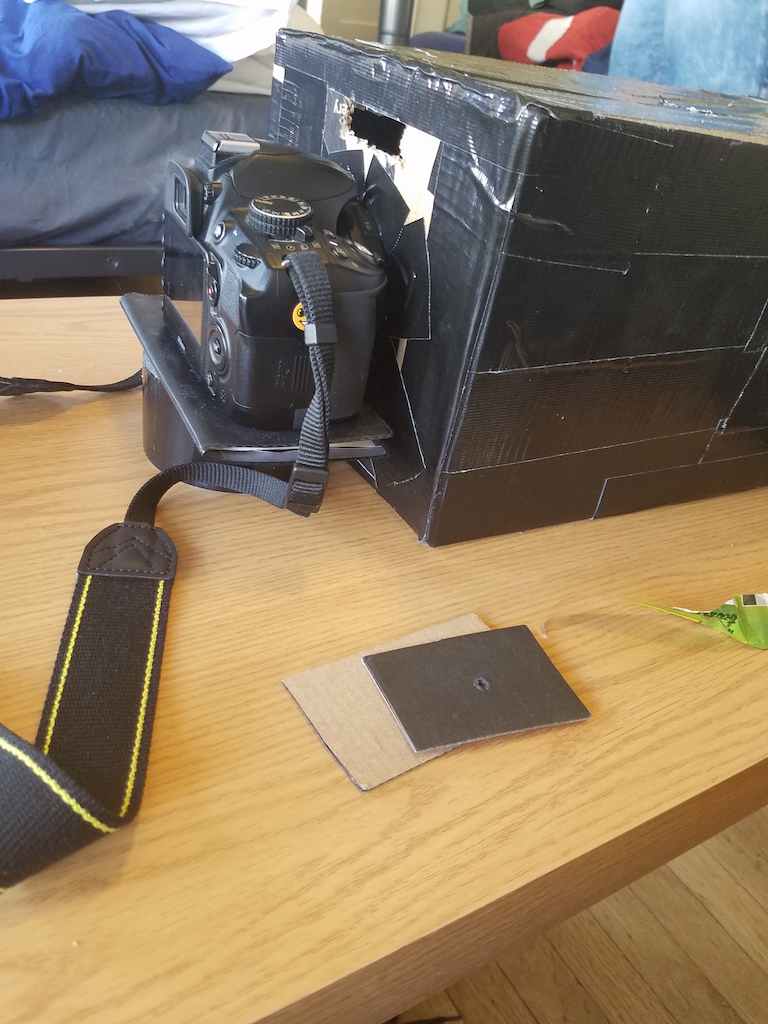
|
Setup:
We chose the northern porch of Doe Library as our shooting spot.

|

|
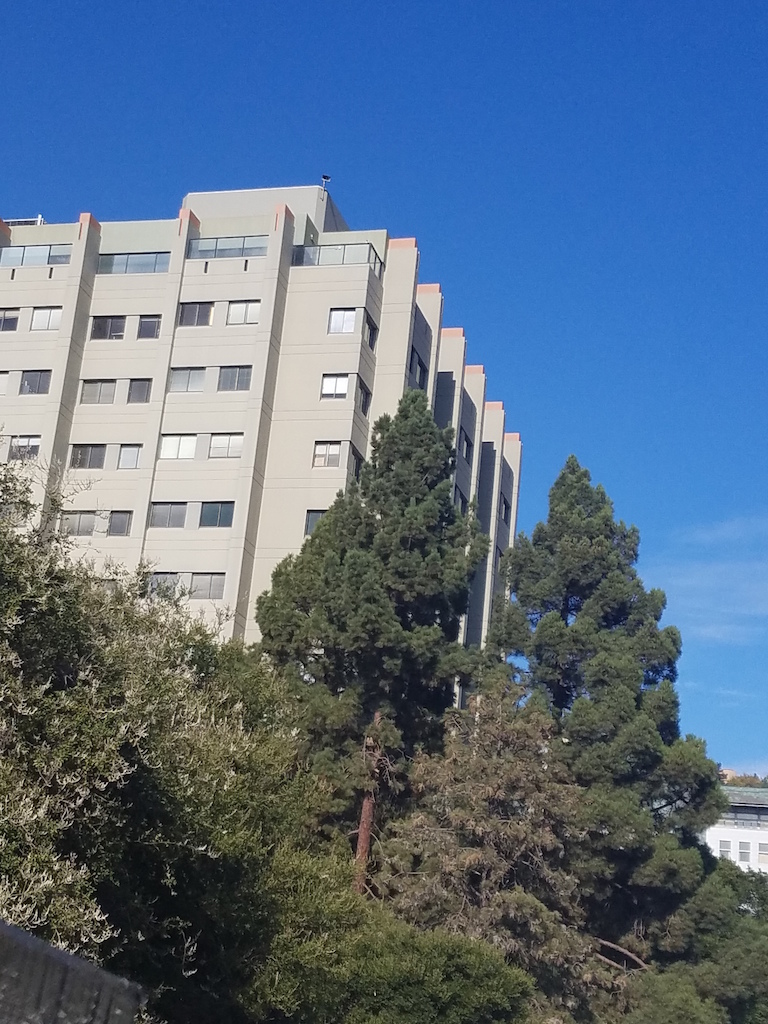
|
Results and Analysis:
Here are all of the image results. We chose the Campanile and Evans as our two scenes. Our initial images didn't work out at all, because a lot of light was leaking through. After that, we decided to duct tape the aperture hole so that less light would leak through. We found that our best pinhole turned out to be 3 mm, because 1 mm let in too little light but the 5 mm picture was blurrier than the 3 mm picture since it let in the most light. When we decrease the size of the pinhole from our largest to medium, the image becomes sharper because there are less light rays that can converge onto each point in our image. When there are many light rays hitting one point in our image, the image becomes blurrier. However, for our smallest size, the pinhole is actually too small and does not make our image sharper because either not enough light comes through the hole, or there is diffraction caused by the light ray hitting the edges of our pinhole. We also have this white glare on the image, but we were unable to pinpoint the reason as to why it was occurring.
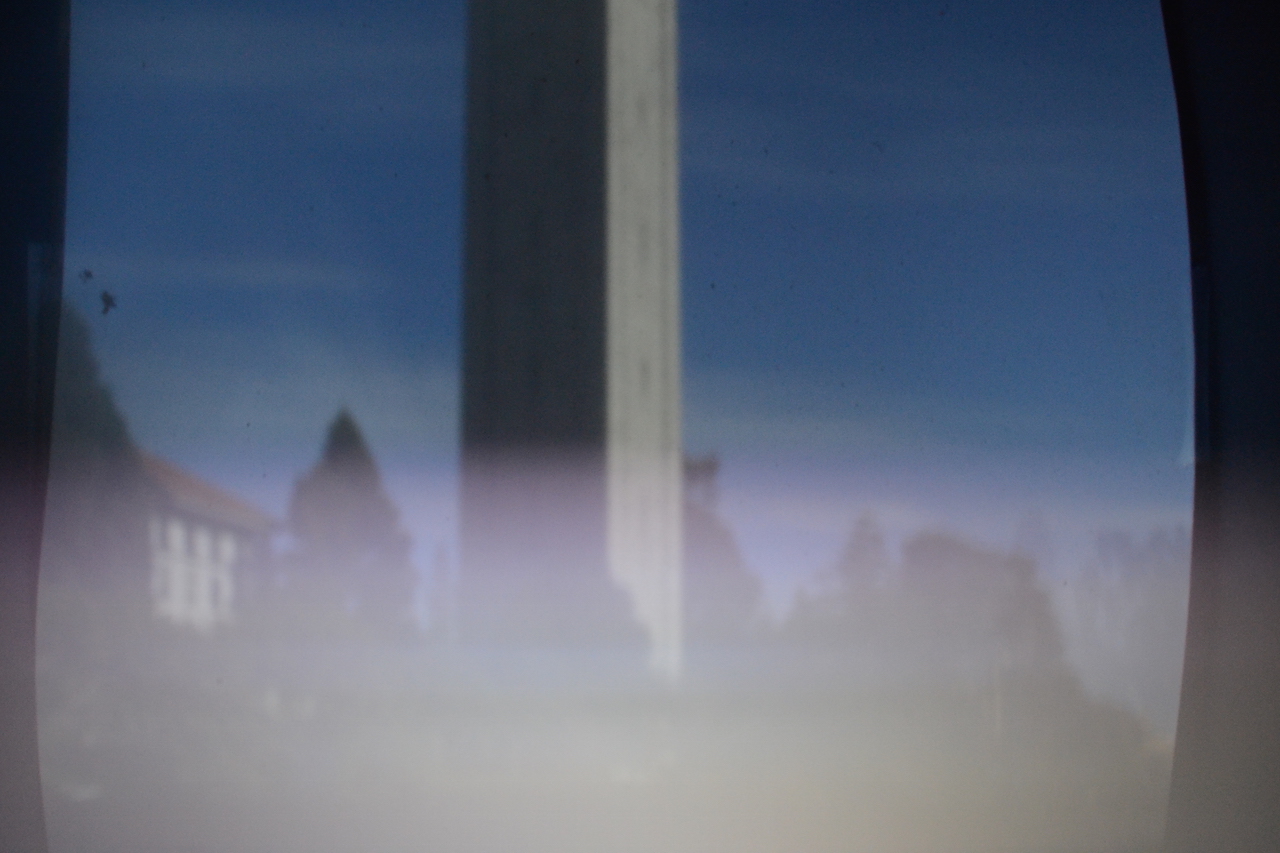
Campanile, 5 mm, 1600 ISO |
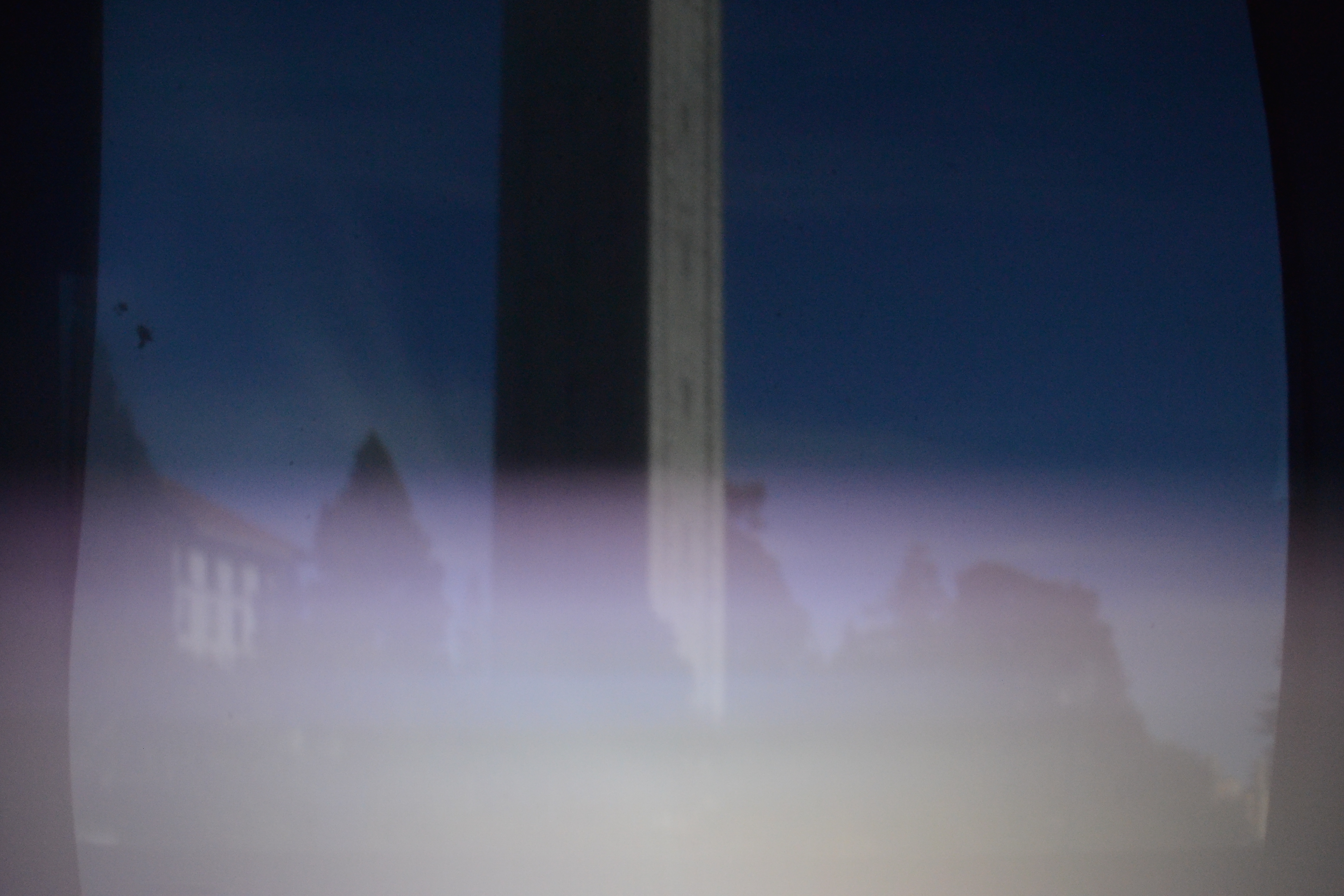
Campanile, 3 mm, 1600 ISO |
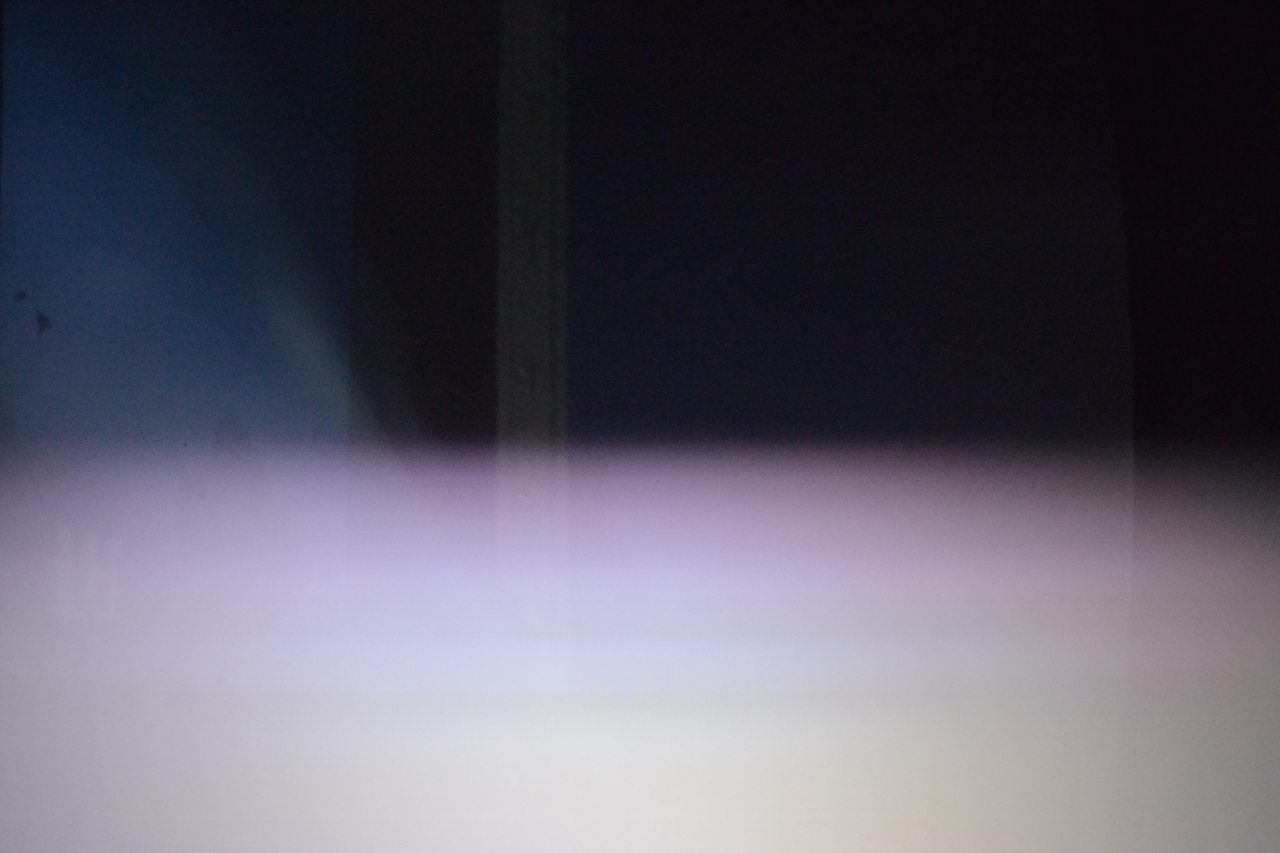
Campanile, 1 mm, 3200 ISO |
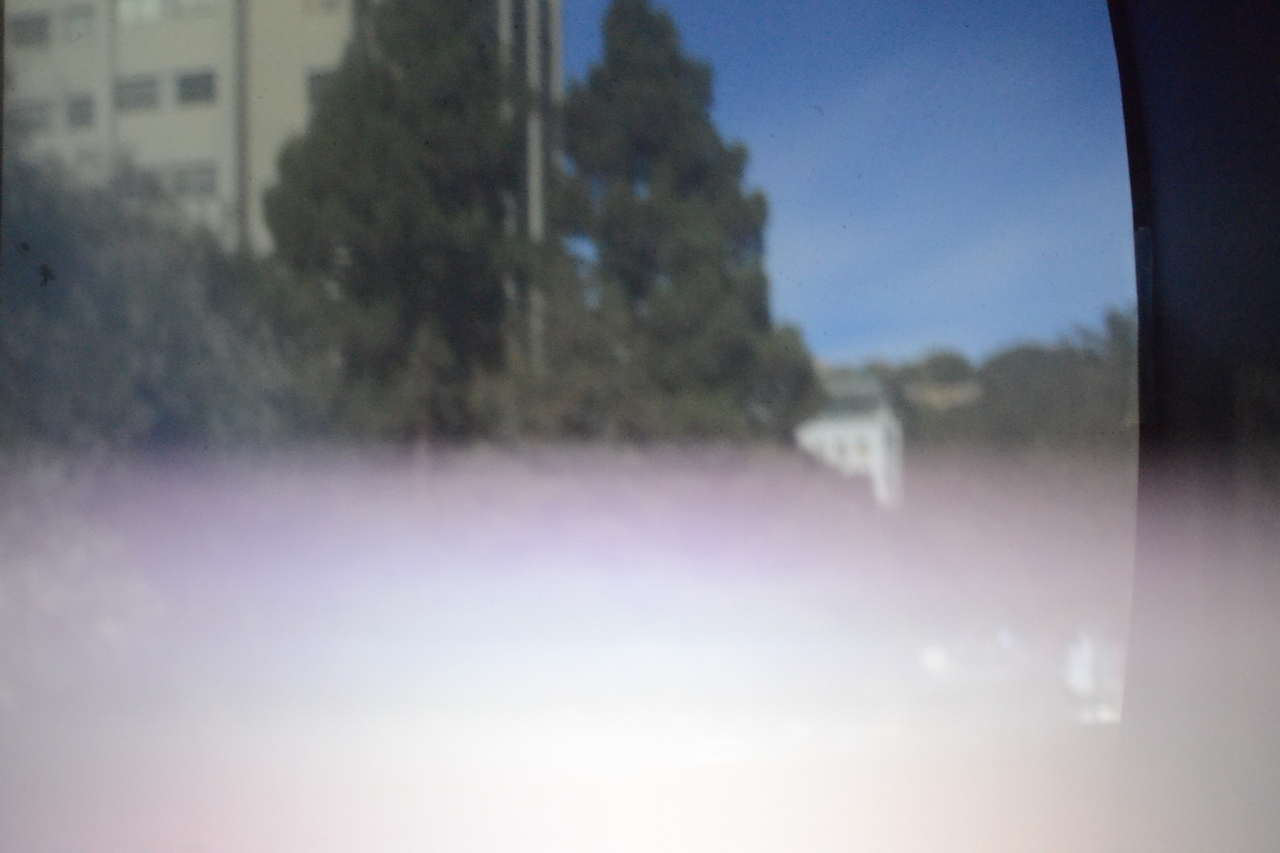
Evans, 5 mm, 3200 ISO |
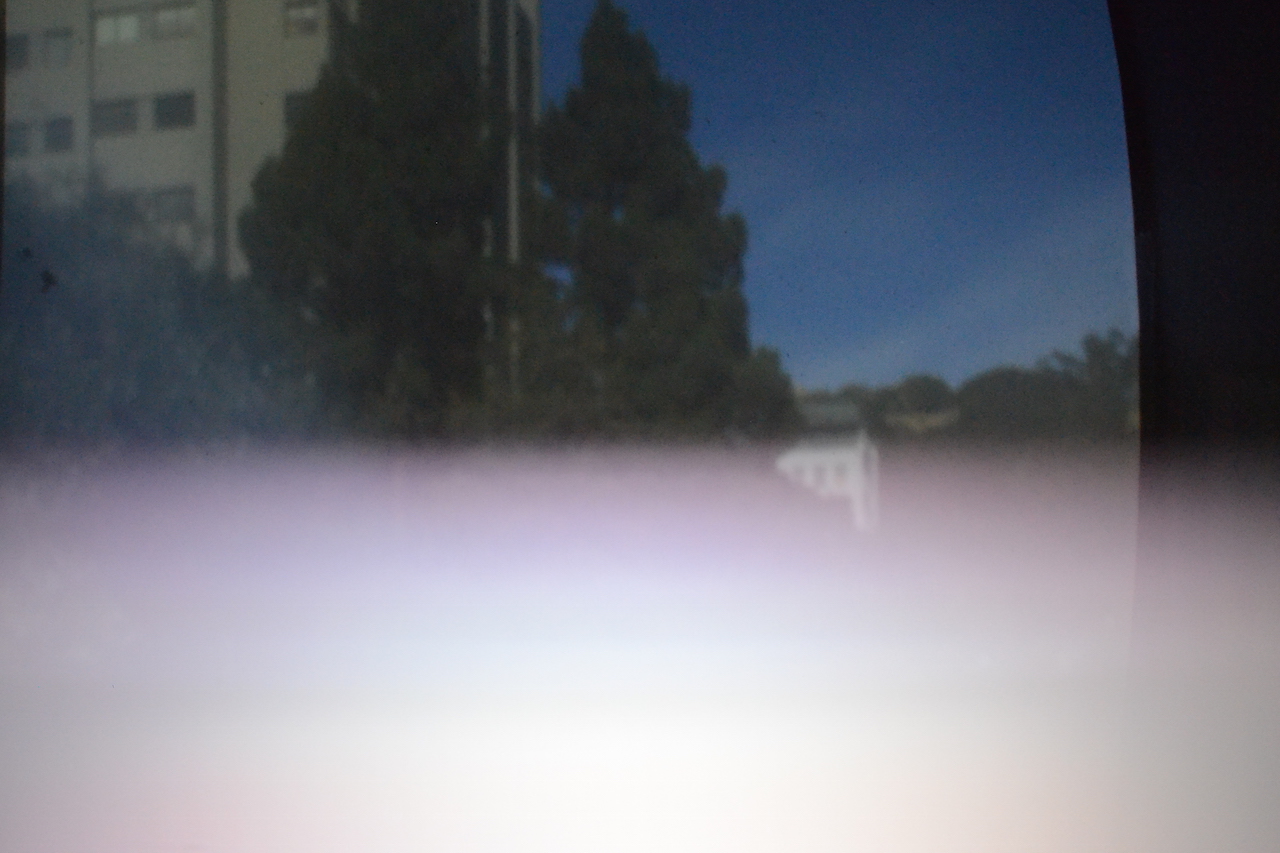
Evans, 3 mm, 3200 ISO |
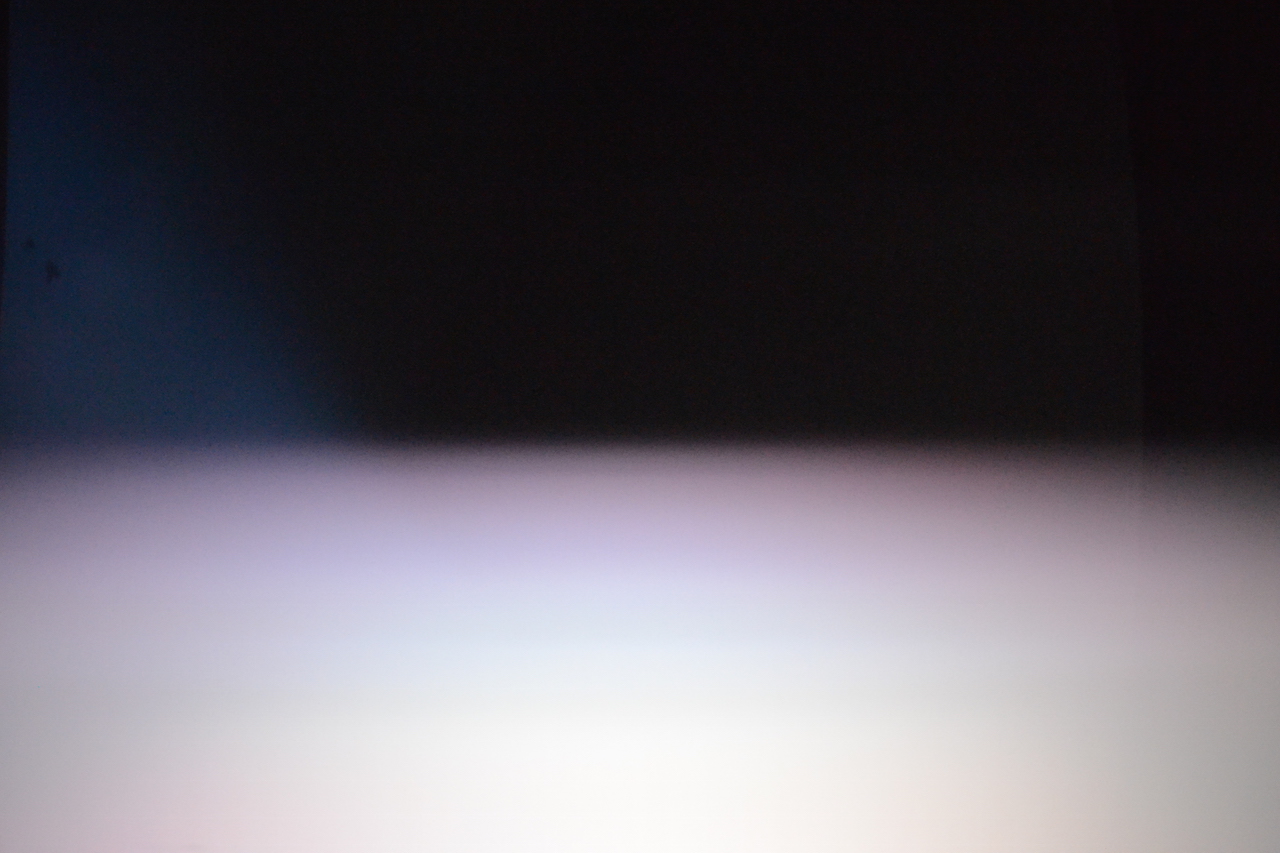
Evans, 1 mm, 3200 ISO |
Additional images with 3 mm:
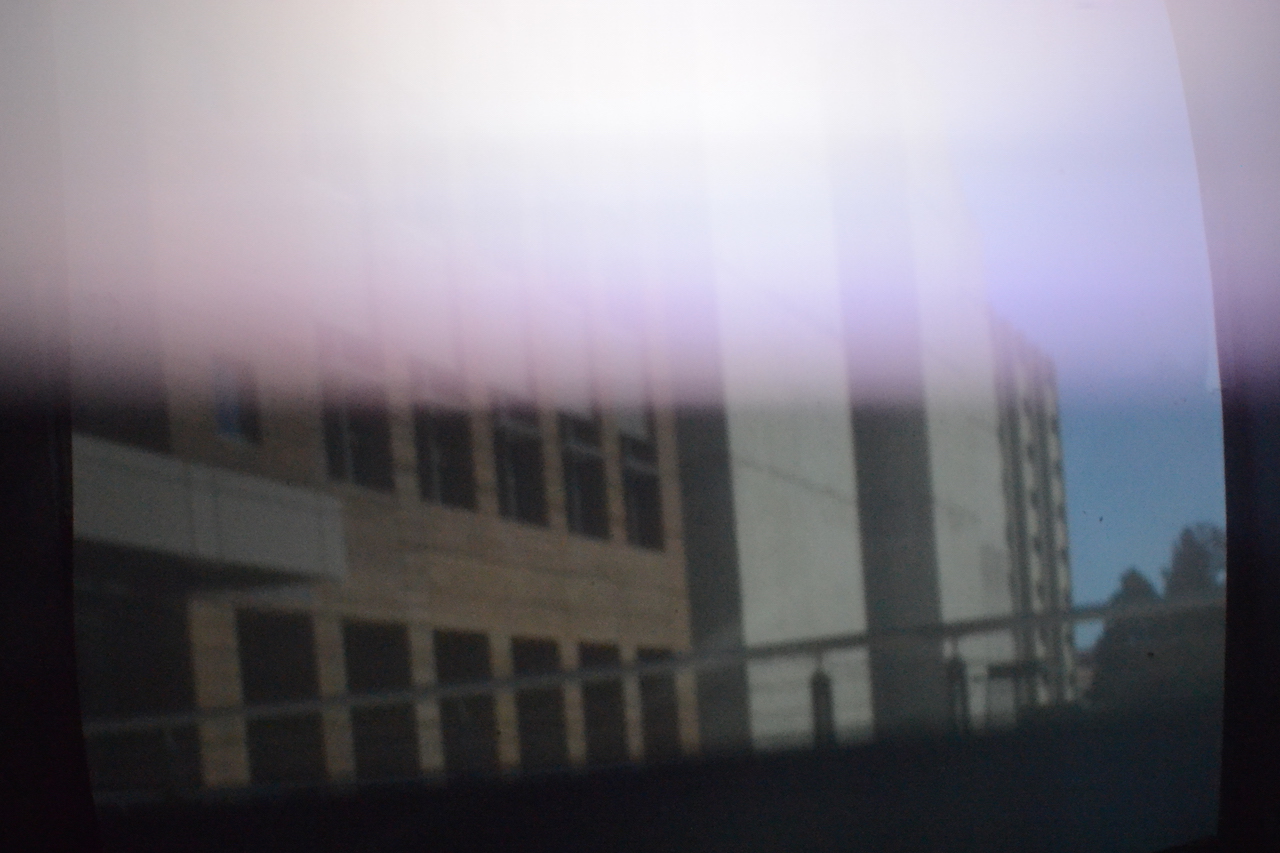
|
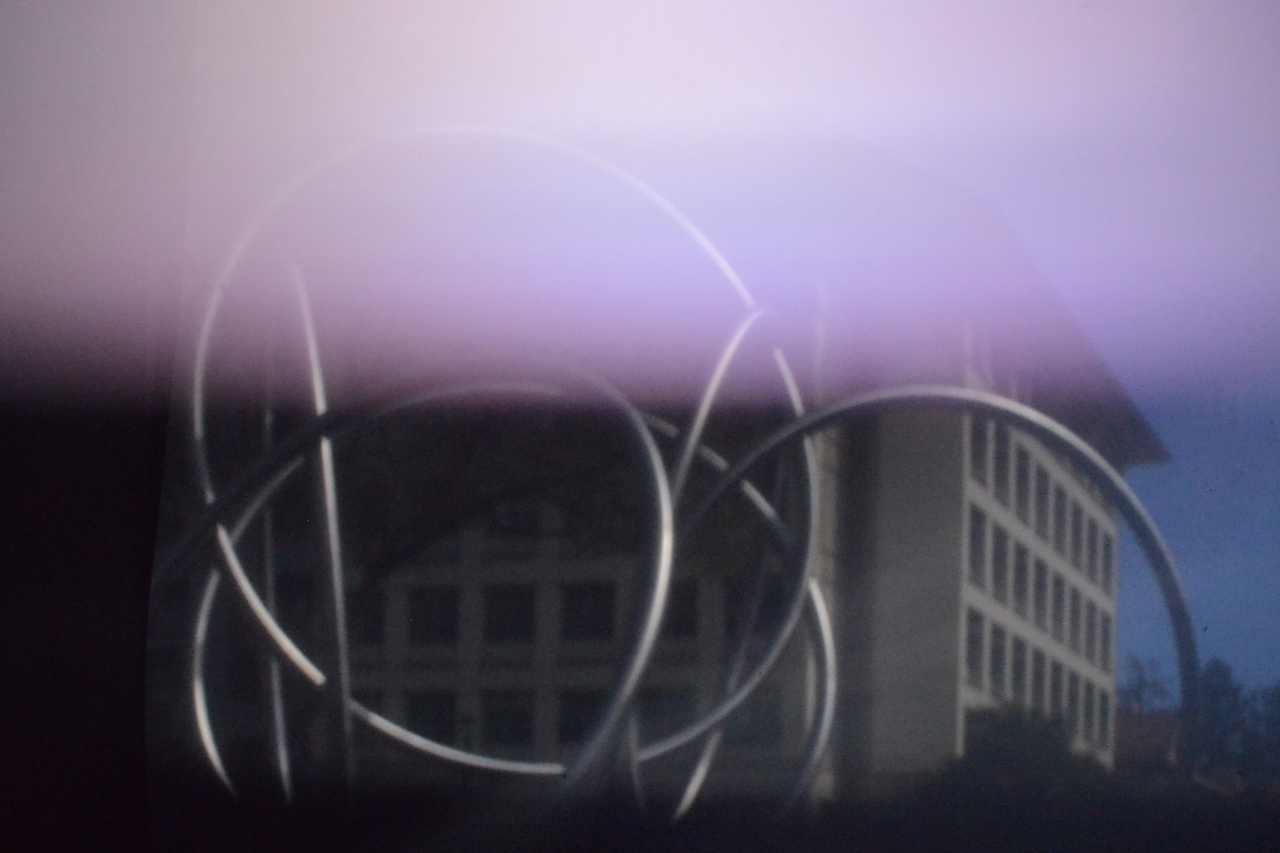
|
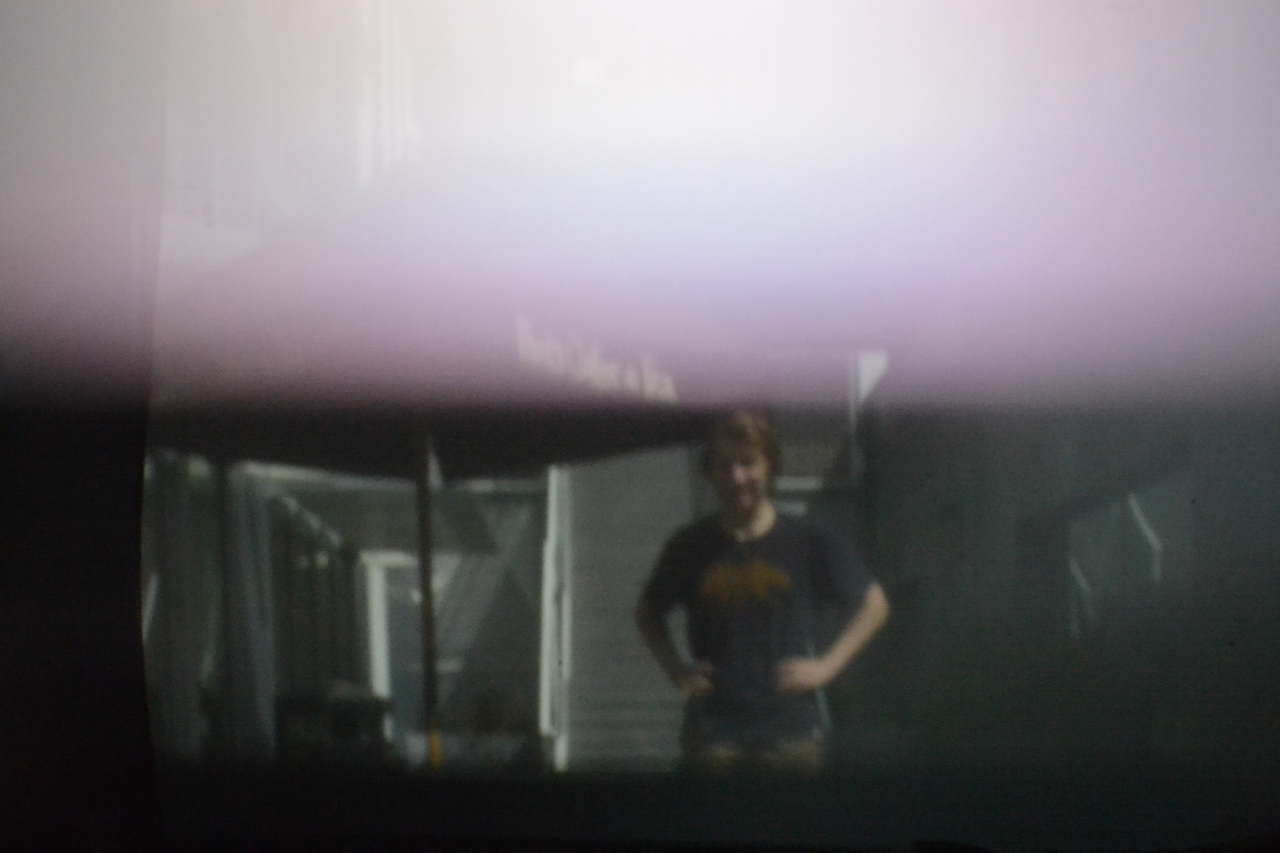
|
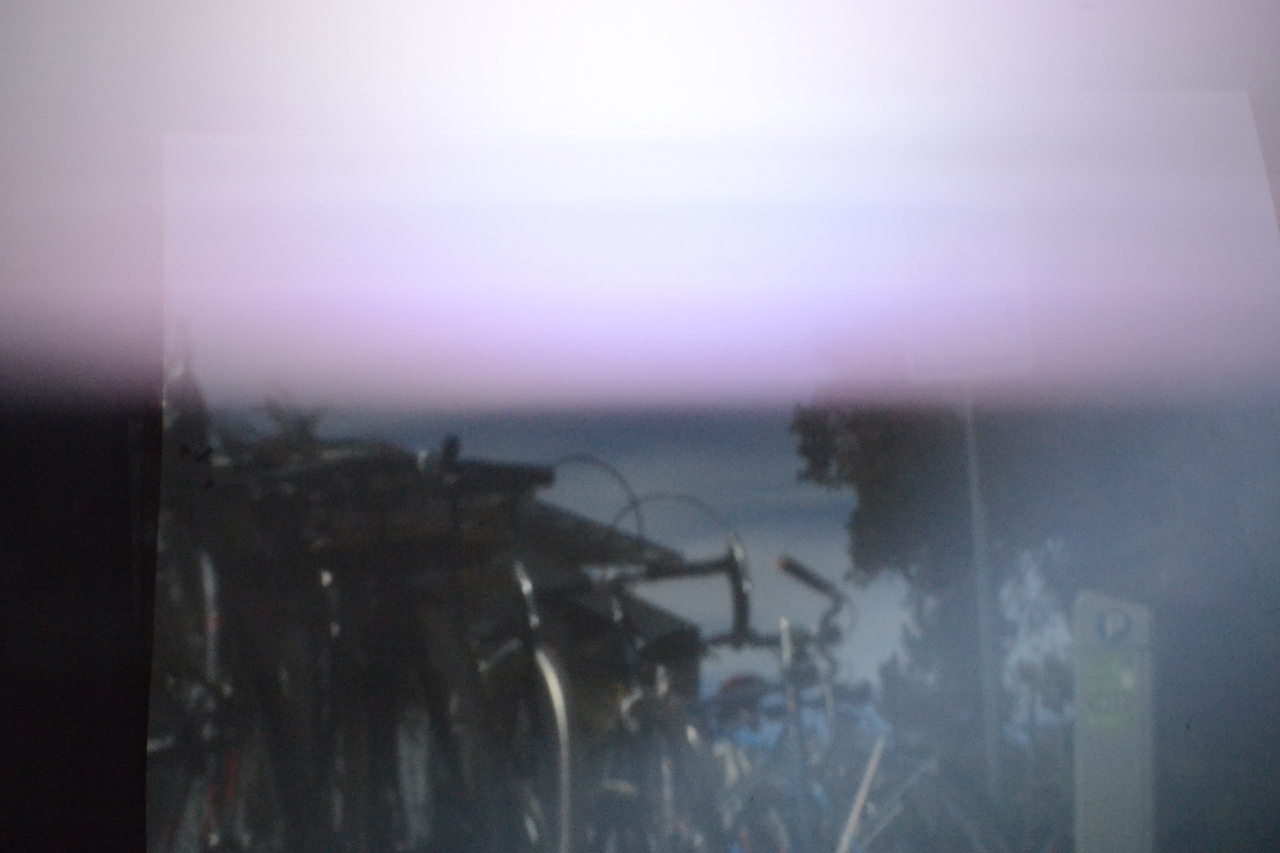
|
Comparison photos of additional images with 3 mm:

|
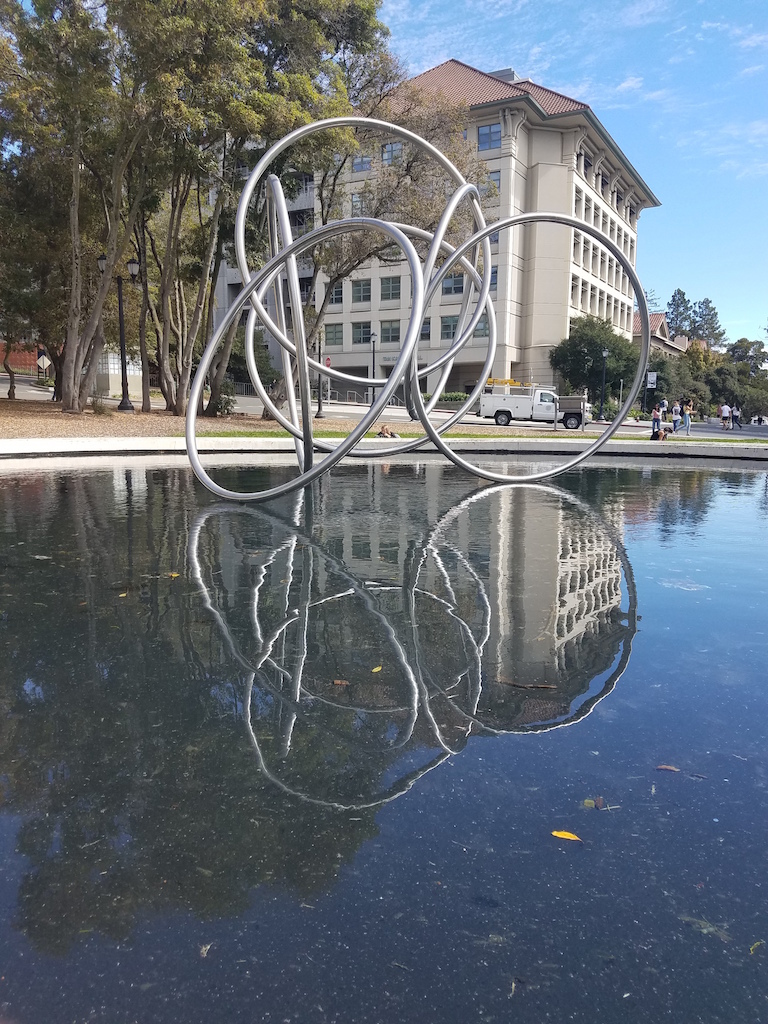
|
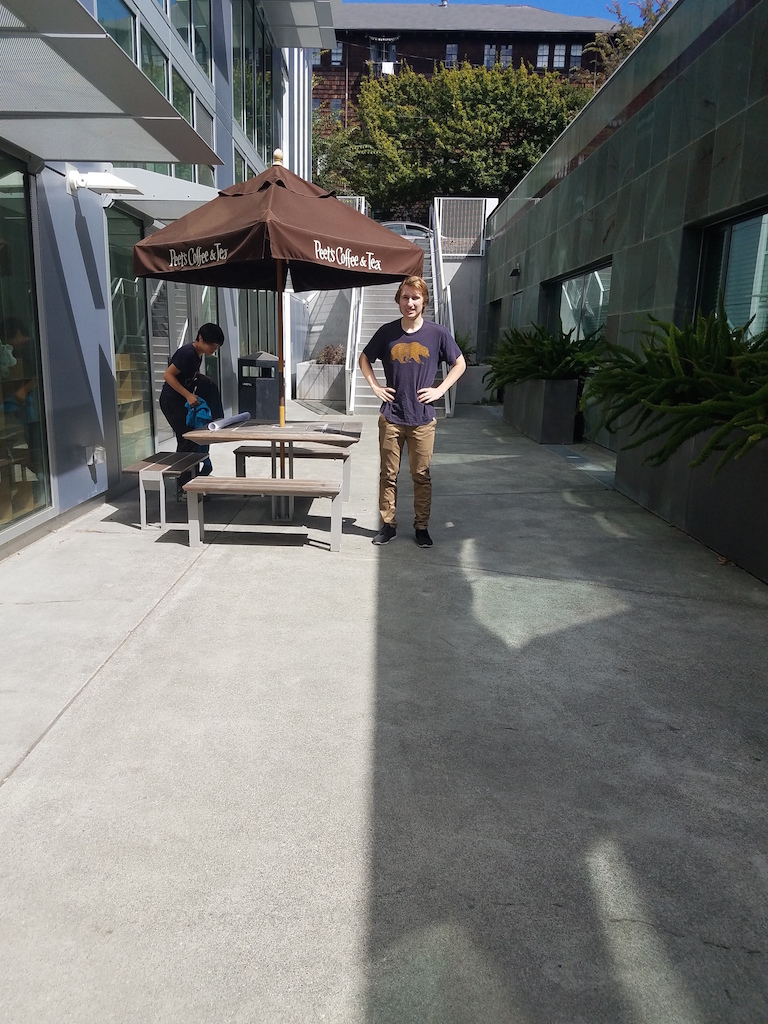
|
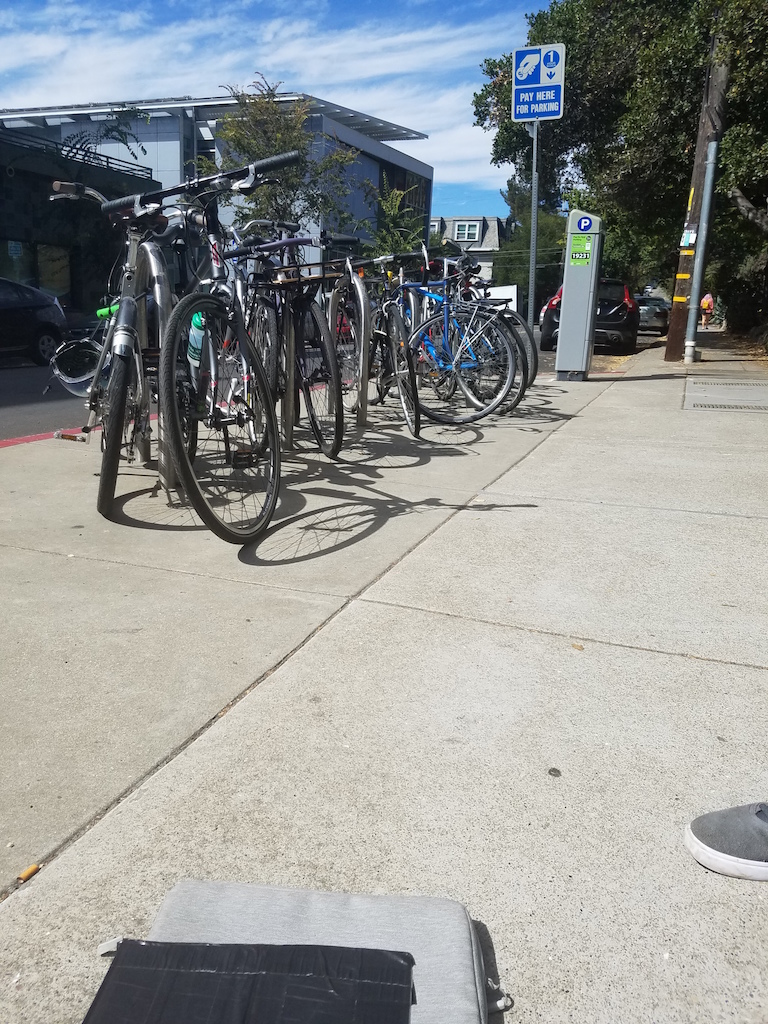
|